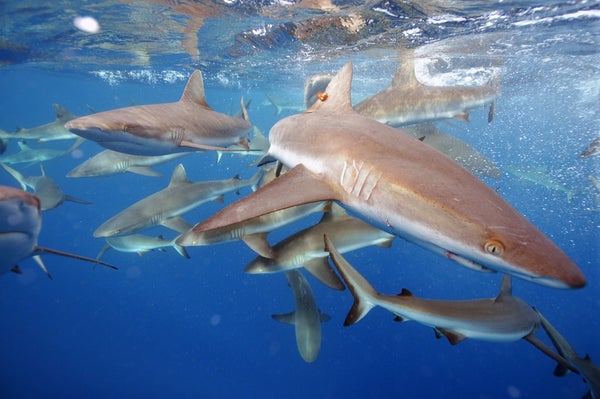This article was published in Scientific American’s former blog network and reflects the views of the author, not necessarily those of Scientific American
The next ten years could be critical for sharks. At least a quarter of the world’s sharks and related species are already endangered, many of them dangerously so. With the pressures on these ancient species increasing, many sharks and rays may not have much time left before they reach the point of no return.
But that fate can be avoided according to a new report, “Global Priorities for Conserving Sharks and Rays,” which lays out a ten-year strategy to prevent shark extinctions and ensure that shark fishing becomes sustainable and responsible.
The strategy—the result of 18 months of hard work by eight conservation organizations and a long list of experts—makes it clear that saving sharks won’t be easy. “We’re admitting that it’s complicated,” says how Sonja Fordham, president of Shark Advocates International and one of the strategy’s authors. “But at the same time, we’re asserting that it’s possible and that the need is really urgent.”
On supporting science journalism
If you're enjoying this article, consider supporting our award-winning journalism by subscribing. By purchasing a subscription you are helping to ensure the future of impactful stories about the discoveries and ideas shaping our world today.
Fordham calls the strategy the result of “unprecedented support and partnership” of people from many fields and from around the world. She says this broad collaboration indicates that this is the right time to take every effort to save not just sharks but their often overlooked relatives, including skates, stingrays, sawfishes, guitarfishes and devil rays. “I don’t think the public has ever been this supportive of conservation of sharks,” she says. “We’re trying to get them to expand their horizons to include rays when they think about the needs of sharks.”
The strategy document itself outlines four key areas where it says progress needs to be made: saving sharks and rays from extinction; managing fisheries sustainably; ensuring responsible trade; and encouraging responsible consumption of shark and ray products. It also has a very specific overall goal: “by 2025, the conservation status of the world’s sharks and rays has improved—declines have been halted, extinctions have been prevented, and commitments to their conservation have increased globally.”
Beyond that, the strategy also outlines dozens of smaller goals to save the most at-risk species, learn more about the species for which scientific information is lacking, preserve coastal habitats, improve trade reporting and certification, block illegal or unsustainable products, and work with retailers and consumers to improve the demand for sustainable products.
“We’re not shying away from the fact that these are complicated problems and there’s no one solution,” Fordham says. “But the time is now and there are many, many concrete steps that could be taken without any more data. There are also many government commitments that need to be fulfilled.”
Fordham has been working in shark conservation since 1991 and says that even with the threats that sharks face, she now feels generally hopeful about the future. “My career has seen incredible progress, both with the way the public sees sharks and the tools that we have available to address overfishing,” she says, pointing to her favorite example, the spiny dogfish (Squalus acanthias), a species that was in bad shape at the turn of the century but was declared recovered in 2011 thanks to science-based fisheries management.
With that type of progress in mind, Fordham says “there are really no excuses not to move forward to pick up the pace.” The conservation coalition has already started advocating this strategy to the governments of the world. It’s also pushing for agencies to fulfill previous commitments and turn them into action. “The tools and resources are available to take those steps,” she says.
Related:
